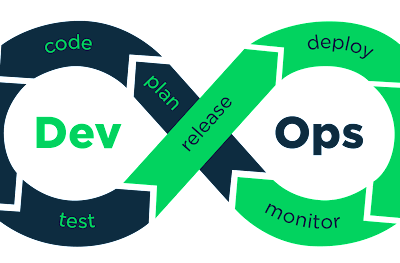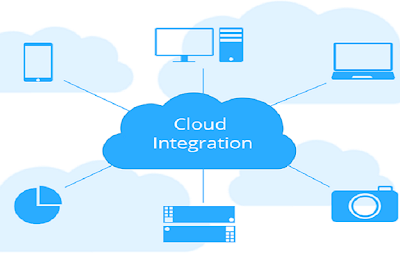Cloud computing is becoming more popular than ever, especially in a pandemic situation. That’s because firms adopt data-driven business models, remote and hybrid work environments, and global supply networks.
New capabilities and deployment models emerge regularly. It gives organizations across all sectors more options on how they consume, use, and benefit from their cloud investments.
Cloud computing boomed in 2020 and 2021 as work turned virtual. Businesses reacted to the worldwide pandemic by focusing on the supply of digital services. We will surely witness a continuation of high adoption and expansion in 2022. To cater to your understanding, you can check out my list of the top 7 cloud computing trends of 2022.
What are Cloud Computing Trends?
Cloud computing trends show how new technology alters how firms function and spend their IT expenditures. Significantly, public cloud customers are no longer required to acquire and maintain hardware and other infrastructure. It includes IT updates and software patches too. Their burden now rests on their cloud suppliers.
The trends allow organizations and their IT teams to concentrate on essential business objectives such as innovation, new product or service offerings, and employing fresh talent. It also helps to level the playing field for developing enterprises that could not previously afford the high cost of innovative technology.
7 Latest Cloud Computing Trends to Follow:
Edge Computing:
Rather than a centralized cloud, this type of cloud computing puts data processing collection, storage, and analysis closer to the sources of the data. It minimizes latency while also enabling the usage of edge devices.

Edge computing powers smart gadgets like smartphones, smartwatches, and smart automobiles. It also includes the interconnectedness of all the data created by these technologies. Predictions expect that, by 2025, 75%of business-generated data will be created and handled outside of a centralized cloud.
Serverless Computing:
Serverless cloud is a relatively new idea gaining market traction from providers such as Amazon (AWS Lambda), Microsoft (Azure Functions), and IBM Cloud Functions.
It allows organizations to use IT infrastructure on-demand, without the requirement for capital investment or infrastructure management. The distinction between general cloud computing and serverless is dependent on how resources are deployed.

Serverless is a subset of PaaS utilized by businesses that require a large amount of processing power but only in brief bursts. One example is the compilation of software code. Serverless models are gaining popularity among large and small businesses. Particularly those who want to create new apps fast but experience a lack of the time, resources, or funding to deal with infrastructure.
AI and ML:
Cloud computing and artificial intelligence/machine learning have a symbiotic connection. The latter supports cloud computing and the former is critical to the delivery of AI services.
Cloud services also contribute to the democratization of AI by making it available to a large customer base. It provides smaller firms with access to AI-enhanced commercial services and powerful machine learning features.

Combining AI and cloud services allows businesses to get the most out of both technologies while being cost-effective. AI assists the cloud with data management and insight. On the other hand, the cloud enables continuous data backup and recovery in a virtual environment. Cloud and AI development and growth are inextricably linked and will only become more apparent in 2022.
GDPR Compliance:
Compliance has become a problem for businesses as they gather more data from an increasing number of sources. And governments pass data protection requirements such as the General Data Protection Regulation (GDPR) and the California Consumer Privacy Act (CCPA).

Cloud storage and apps increase access to company data, giving businesses more flexibility over how the data is maintained. Data governance is now a critical concern for any IT expenditures. It is crucial, particularly when developing systems to handle sensitive financial data or other personally identifiable information about consumers.
SASE:
Businesses are reconsidering their approach to security and risk management. That’s because employees use more services and data from their own devices that are not connected to their organizations’ IT networks. Gartner’s Secure Access Service Edge (SASE) is a cloud-based solution to IT security that addresses the changing nature of work.

Companies that use a SASE architecture benefit from cloud-based network security services such as secure gateways, firewalls, zero-trust network access, and more. This is a strong approach to IT security. It enables enterprises to deploy new cloud services fast while remaining confident that their systems are secure.
Kubernetes:
Containers provide enterprises with a dedicated, cloud-based area to develop, test, and deploy new applications. This allows developers to concentrate on the intricacies of their applications. On the other hand, IT teams concentrate on deploying and managing solutions as they are produced. This makes the entire process faster and more efficient.
Kubernetes is an open-source container orchestration technology that makes it easier to deploy and manage container-based applications. Aside from automatically scaling apps based on client demand, the software also monitors the success of new services so that firms can solve issues as they arise.
Cloud-Native Applications:
Cloud-native apps enable enterprises to create and deploy new software to clients. It is faster than traditional monolithic cloud services, which operate on a single hardware or software hub.

Cloud-native apps are instead constructed as a network of distributed containers and microservices. As a result, many teams may work on new features concurrently, boosting the speed of innovation.
Conclusion:
The cloud computing market is expanding at an unprecedented rate as businesses transition from on-premises IT to hybrid and cloud-based solutions. In the last two years, the cloud has emerged as one of the most significant technology victors. It evolved into a trend that promotes creativity as well as a standard that allows for flexibility and cost savings.
With cloud services continuing to be important in all business operations, there is no doubt that the cloud is the future. As a result, new cloud-native trends will undoubtedly develop in this vast digital world of diverse and dynamic design. Global spending on cloud services is expected to exceed $482 billion in 2022, up from $313 billion in 2020.





